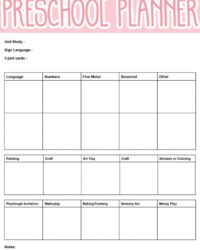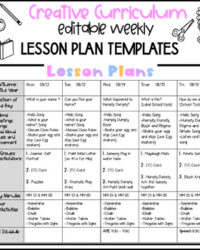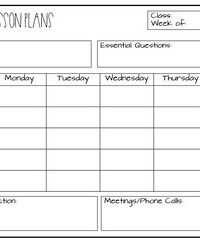Ever feel like you’re juggling a dozen different balls when planning for your preschoolers? Creating engaging, developmentally appropriate lessons can be a delightful challenge, but it often feels like there aren’t enough hours in the day. That’s where a well-structured approach comes in handy, especially when you’re aiming for a rich, child-centered experience.
Imagine having a clear roadmap that guides your daily activities, ensuring every child thrives. The goal isn’t just to fill time, but to foster genuine curiosity, critical thinking, and social emotional growth. This pursuit leads many educators to explore robust frameworks designed for holistic development, providing a sturdy foundation for their teaching journey.
Unlocking Potential with The Creative Curriculum
The Creative Curriculum isn’t just a set of instructions; it’s a philosophy that empowers both educators and young learners. It’s built on the understanding that children learn best through active exploration and interaction with their environment. Instead of rote memorization, it encourages hands-on activities, play-based learning, and projects that spark genuine interest. This approach naturally leads to more engaged children and a dynamic classroom.
What makes it so effective? It’s deeply rooted in educational research and developmental psychology, acknowledging that each child develops at their own pace and possesses unique strengths. The curriculum provides a comprehensive framework covering all areas of development – social emotional, physical, language, and cognitive – ensuring a well-rounded learning experience. This systematic yet flexible structure allows teachers to observe individual needs and tailor their teaching accordingly, making every moment a learning opportunity.
One of the cornerstones of the Creative Curriculum is its emphasis on intentional teaching. This means every activity, every interaction, and every learning center is designed with specific learning objectives in mind, even if it looks like simple play from the outside. Teachers become facilitators, guiding children through discoveries rather than just delivering information. It encourages a responsive environment where children’s interests often dictate the direction of projects, fostering a deeper sense of ownership over their learning.
Furthermore, the Creative Curriculum provides extensive resources for assessing children’s progress and communicating with families. It’s not just about what happens within the classroom walls; it’s about building a strong partnership between home and school. This comprehensive support system ensures that children receive consistent care and education, leading to better outcomes. Embracing this curriculum means stepping into a world where planning becomes less about rigid schedules and more about creating vibrant, meaningful experiences.
Key Pillars of the Creative Curriculum Philosophy
- Responsive Environments: Creating spaces that invite exploration and learning.
- Intentional Teaching: Guiding children with purpose and specific learning goals.
- Family Partnerships: Collaborating with parents to support holistic development.
- Observation and Assessment: Understanding individual progress to inform teaching.
Crafting Your Ideal Preschool Lesson Plan Template Creative Curriculum
Now that we understand the power behind the Creative Curriculum, how do we translate its principles into a practical, everyday tool? This is where a well-designed preschool lesson plan template creative curriculum becomes your best friend. It acts as your organizational hub, ensuring you incorporate all the rich components of the curriculum while keeping your daily flow smooth and manageable. Think of it not as a rigid rulebook, but as a flexible scaffold that supports your creativity and keeps you aligned with your educational goals.
A good template should be intuitive and adaptable, allowing you to easily plug in activities, materials, and learning objectives specific to your classroom’s unique needs and the children’s emerging interests. It should prompt you to consider different developmental domains, encourage differentiation for individual learners, and remind you to include opportunities for both indoor and outdoor play. The beauty of a template lies in its ability to streamline the planning process, freeing up more time for direct interaction with your students and thoughtful observation.
When building or choosing your template, consider elements that reflect the Creative Curriculum’s emphasis on project-based learning and inquiry. You’ll want sections for large group activities, small group investigations, and individual choice time. Don’t forget space for materials needed, assessment notes, and even reflections on what went well and what could be adjusted for next time. The goal is to create a template that serves you, making planning efficient and effective, rather than feeling like an additional burden.
Essential Elements for Your Creative Curriculum Lesson Plan Template
- Date and Theme/Study Topic
- Learning Objectives (aligned with developmental domains)
- Large Group Activities (e.g., Circle Time, Story Time)
- Small Group Activities (differentiated learning)
- Choice Time/Learning Centers (materials, setup)
- Outdoor Play Ideas
- Materials Needed
- Assessment Notes/Observations
- Reflection Space (what worked, what to improve)
Embracing a structured yet flexible approach to lesson planning can truly transform your preschool classroom. By leveraging the principles of a comprehensive framework, you’re not just delivering lessons; you’re cultivating an environment where every child feels seen, valued, and excited to learn. It’s about building a foundation for lifelong learning, one engaging activity at a time, and celebrating every small victory along the way.
The journey of an early childhood educator is filled with boundless creativity and profound impact. With the right tools and a deep understanding of child development, you can create magical learning experiences that resonate deeply with your students and set them on a path of continuous discovery and growth. Your dedication to thoughtful planning truly makes all the difference in shaping young minds.


